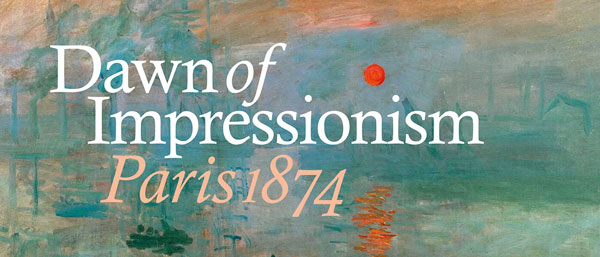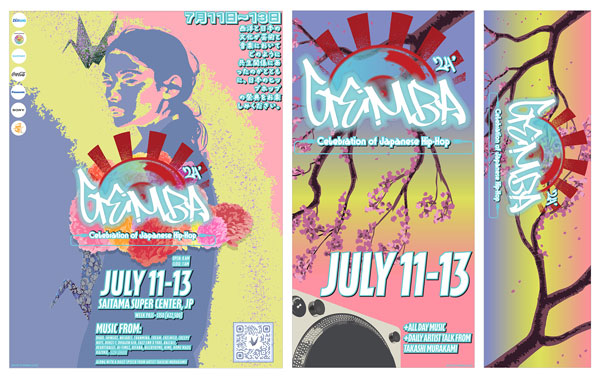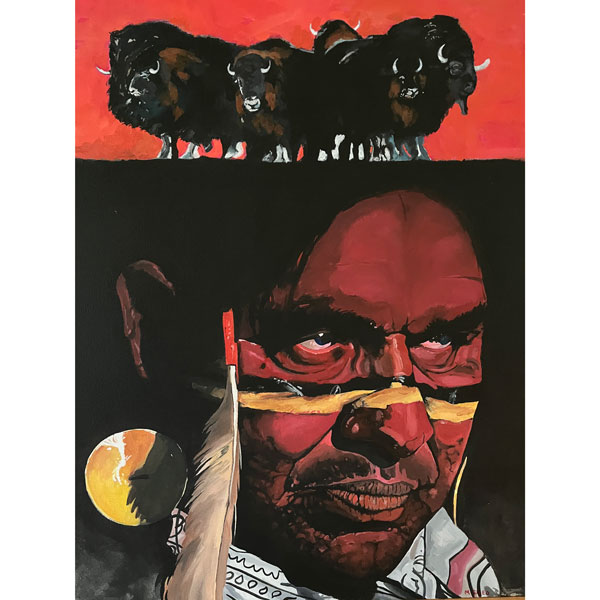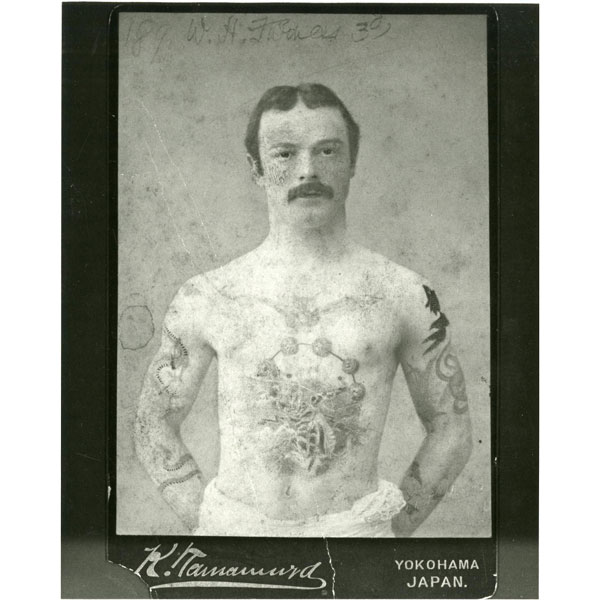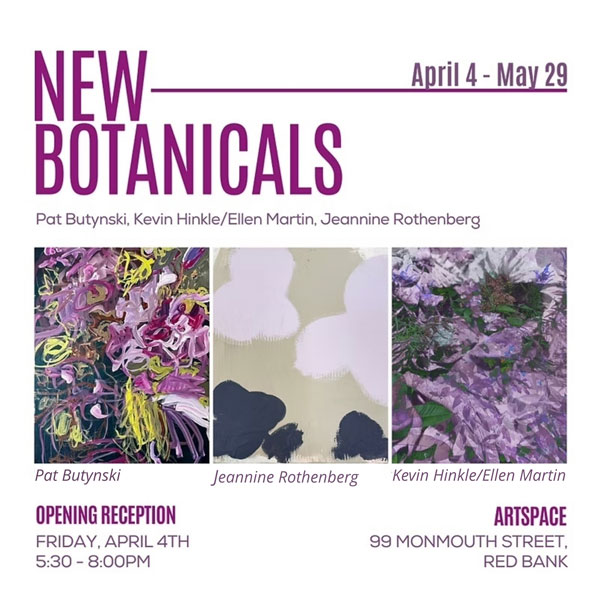The Wallpaper Speaks in "To Whom It May Concern"
By Shen Shellenberger, JerseyArts.com
originally published: 09/08/2022
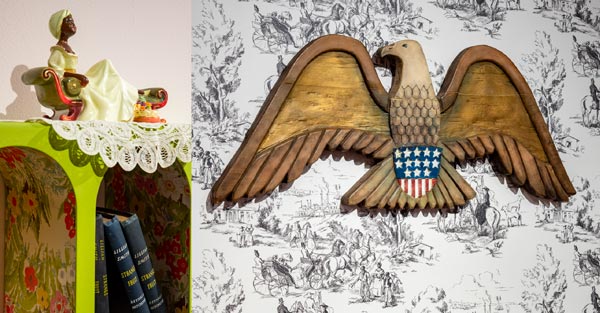
Editor’s Note: Below is an interview with the curator. Following that is an interview with the artist.
“This is very different,” said Rowan Art Gallery Director/Curator Mary Salvante, referring to “Genevieve Gaignard: To Whom It May Concern,” the exhibition on view now through Oct. 29. A reception Thursday, Sept. 15, from 5:00 to 7:00 p.m. will include an artist talk at 5:30 p.m.
Both Salvante and I laughed about that comment. “I say that every time, don’t I?” she said.
But the fact is that Rowan Art Gallery has a history of presenting thought-provoking, visually compelling exhibitions. And each is different – in content, context, medium, and more. A quick browse-through of the list from the past two-plus years will confirm that claim.
“To Whom It May Concern” is no exception. This solo exhibition by Los Angeles-based multidisciplinary artist Genevieve Gaignard is a survey of her works in self-portraiture, collage, sculpture, and installation that explores race, beauty, and cultural identity.
And the creative process does not end with the works arriving at the gallery. “Artists are more engaged in the process now,” Salvante said, noting that Gaignard designed the show from the bottom up. “It is important for them to take a more active part. It isn’t just the work; it is the way it is shown.”
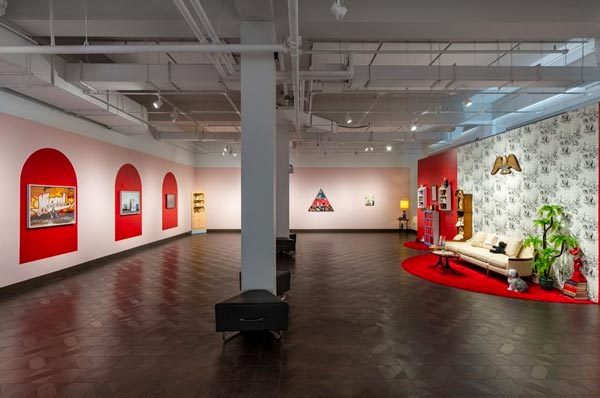
“The curator’s role is more as part of a collaboration,” she said. “I identify as curator, but the artist is also curating.”
The exhibition opens with Gaignard’s staged self-portraits, which Salvante said are designed to push against stereotypes – around race, beauty, and femininity – and explore Gaignard’s challenges as a fair-skinned, biracial woman.
“They are exaggerations, meant to create an environment – with the composition, the space, the outfits,” Salvante said. “In many ways, the photography is performative, crafting an ambiguous space. But Genevieve is using herself.”
In the work “Vanilla Ice,” for example, Gaignard, wearing a brown baseball cap, a crop top with a pack of cigarettes tucked into one strap, and an oversized plaid shirt tied around her waist, is posed between a hulking packaged ice freezer and a coin-operated mechanical horse.
“She is very intentional about her clothing,” Salvante said, “and she finds these spaces that are so relatable.”
“This could be any small town, any place in South Jersey,” she said. “We can see ourselves in that picture.”
The revelation here, though, is that it is likely that those who most closely align themselves with this image are White. And while Gaignard is White, she is also Black. She is saying, “I may not look Black, but I am.”
The exhibition brochure goes deeper into this dichotomy, explaining that Gaignard “has consistently grappled with others’ acceptance of her mixed race, and probes this notion of ‘passing’ by positioning her own female body as the subject of her photographs and staged with familiar objects and ‘props’ that blend eras, economic class, and race.”
This theme continues throughout the exhibition, with the sculptures – such as a pastel yellow corner cabinet with bedazzled wallpaper inside and thrift store bric-à-brac on its shelves – or the collages that present a nostalgic, but often uncomfortable, time-travel journey.
“She has created these domestic, recognizable environments, sourcing materials from thrift stores and old lifestyle magazines,” Salvante said, “but she is constantly reframing the narrative.”
Gaignard uses vintage wallpaper liberally. In her artist statement, she explains that the material – “a childhood sentiment” – serves as an accent or backdrop to the found objects and images she uses. “My goal is to create environments and experiences that awaken critical thinking and offer a shift in perspective.”
Salvante references the mixed-media installation, “Black White and Red All Over.” “It is a space that suggests a comfortable lifestyle with touches of Americana,” she said. “And the wallpaper looks like a gentile Southern plantation scene, but, on closer inspection, you see what it essentially depicts is enslaved people and White privilege.”
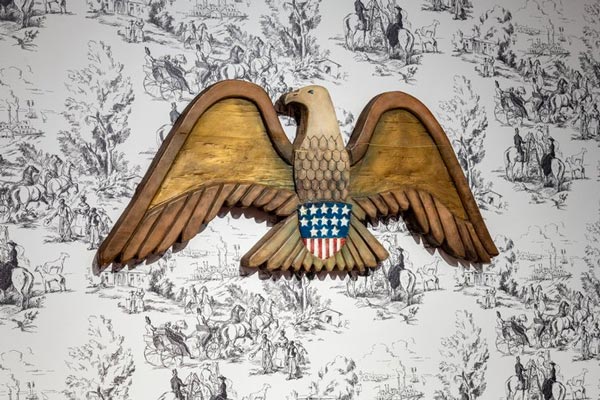
Other scenes and objects illustrate comparable ideas – an image from a magazine ad with a Confederate flag sticking out of a loaf of Wonder Bread or a postcard showing a Black child atop a bale of cotton, complete with a small bag of the fluffy material attached. And, while humorous touches and lightheartedness appear throughout the exhibition, there are many serious elements as well.
In “White Lies” we see an angelic-looking woman in a flowing gown positioned next to Dr. Martin Luther King addressing a crowd, both images set against delicately flowered wallpaper.
“Many scenes seem to hearken back to a simpler time,” Salvante said, “but Gaignard is saying that life wasn’t that rosy.”
“We are not trying to hit anyone over the head with the message, but the objects and imagery keep you engaged,” Salvante said. “The exhibition is rich with storytelling and symbols and narrative,” she said, “and she is trying to point out that there is more to the viewpoint than just nostalgia.”
With “To Whom It May Concern,” Salvante, like with all the exhibitions she brings to the gallery, uses art to bring attention to significant issues.
And because the gallery is part of Rowan University, what is shown there also becomes part of the university in the gallery can also be part of the curriculum.
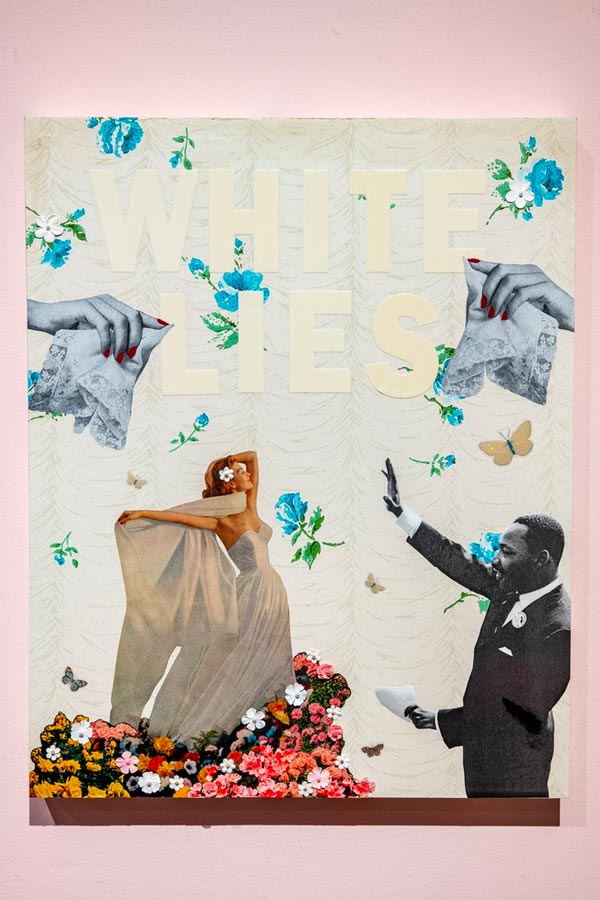
With the school and the gallery back on their normal operating schedules, Salvante is happy to reach out to different departments, such as Anthropology, Social Justice, Black History, and others, and encourage them to use the exhibition with their classes. “We see ourselves as an extension of the classroom,” she said. “We want to contribute to the educational experience.”
But she approaches the connection from an artistic discipline as well.
“Gaignard’s photography was the initial interest in bringing in her work,” Salvante said. “I was thinking about what we might do this year,” she said. “And photography is something we haven’t shown frequently. Jenny Drumgoole, a photography professor at Rowan who knew Gaignard from Yale, suggested her to me.”
“Then I began to investigate her other work and realized how much the thread of her message connects.”
Gaignard’s work is certainly provocative, but Salvante notes that it is also relatable. “She communicates through figurative imagery,” she said. “The audience can find things they are familiar with.”
Post-pandemic, Rowan Art Gallery still maintains an online presence. “We continue to do video walk-throughs,” Salvante said. “We learned what things we could do when we were closed.”
“The way I look at it now is that the online content is another experience in a legitimate way,” she said.
But something is missing with the online-only version. “You lose some of the intimacy, the personal dialogue with the art when you aren’t seeing it in person.”
Gaignard’s exhibition is a perfect example of work that needs to be seen and experienced in real life. So many of the finer points and the small touches, as well as the overall look and feel of the show, are lost when you are seeing only what the camera shows.
“There are objects that create an immediate response,” Salvante said. “They are familiar, non-threatening, comforting, and they engage the viewer.”
“Then we poke at them,” she said.
“We think this is a great way to kick off the gallery season.”
Shen Shellenberger (SS): Why do a survey rather than focus on one body of work at this time?
Genevieve Gaignard (GG): After my 2022 solo exhibition “Strange Fruit” with Vielmetter Los Angeles, I essentially felt the weight of my work. This exhibition has given me solace and has been a way to unlock the gates for a new body of work in the future. I chose to recontextualize these pieces into a new dialogue, and this feels true to my work in the way I pull from the past to create something new. To Whom it May Concern is a remix of work drawn from its original context and layered into a new yet familiar melody. Working with Rowan University on this exhibit has uncovered the endless possibility of rethinking the scope of my work as it relates to itself.
SS: What is your process for creating an installation like “Black White and Red All Over”? Do the objects drive the design or is the idea formed, with the objects fleshing it out?
GG: “Black White and Red All Over” was directly inspired by the wallpaper. While looking through wallpaper I landed on this one particular paper and I thought, “Oh wow this must be really old paper,” based on the imagery. I then learned this paper is from the 70’s and was surprised people still wanted to live with the imagery of an antebellum setting embracing slavery. I decided to conceptualize a space of a family that might live with this wallpaper. This installation is suggestive in its nature and is an examination of white domestic space.
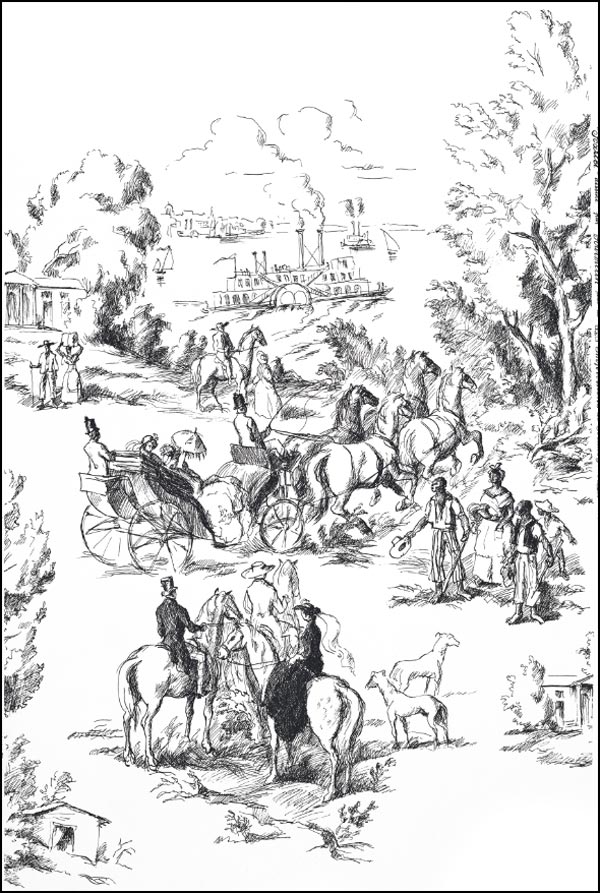
SS: You chose a soft pink for the walls, and you use a lot of red in your works and in the gallery spaces. What is the significance of those two somewhat contradictory colors?
GG: I made this installation during Trump-era voting. At that time, red always stood out to me. Aside from the American political binary, red symbolizes death, blood, and a feeling of intensity. Pink is a safe and unassuming color that is seemingly feminine and dainty. I do find it is fascinating to think that the color pink is essentially red with white added.
SS: In works like “Can I Call You Rose” and “She Was Everything Real in a World of Make-Believe,” did you hand-paint the figurines’ faces black?
GG: Yes, the figurines and plaques I use in my work are repainted to represent black characters. However, the figures in the two shelf pieces have a different story. These pieces are created from Royal Daulton and mammy figurines. The heads are removed from each figurine, the mammy head is then placed upon the Royal Daulton, and seamlessly put back together. The intention is to take the mammy out of its servant role and shape her into a more delicate form. Black women are rarely depicted as soft or needing care, but always the caretaker. These characters in my work are fragile, requiring protection. We need to honor black women as white women always have been.
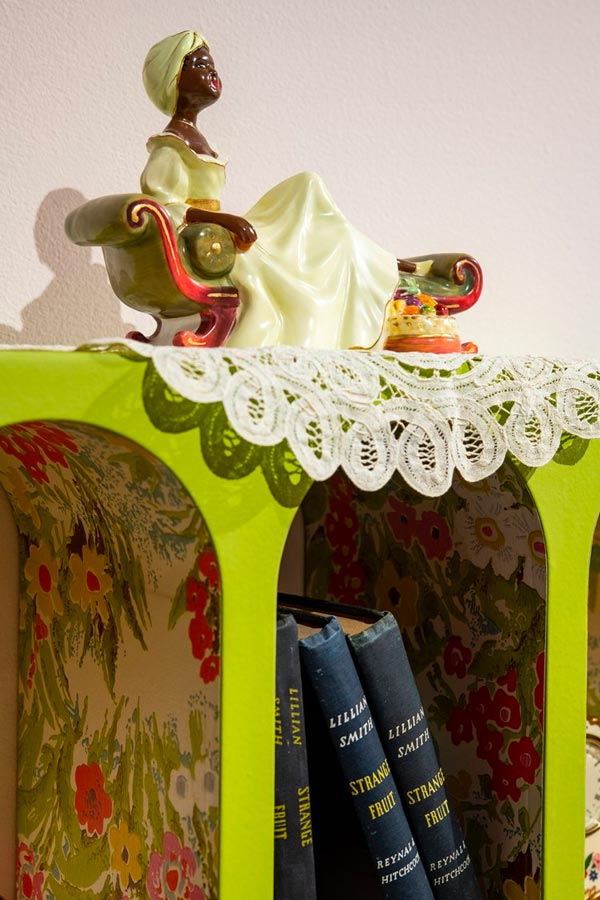
SS: You state that “installation is my channel to create imagined domestic environments as sites of sanctuary and resistance.” Can you elaborate on that? How does creating a site of sanctuary help to clarify your message? From what – or who – are these sites a sanctuary?
GG: “Black, White, and Red All Over” is an installation that dissects whiteness and domestic white spaces. This is opposite from my installations that celebrate black domestic spaces, similar to Family Tree, which was recently acquired by MFA Houston. As mentioned earlier, the imagery of this wallpaper prompted me to examine the insidious impact of white supremacy and how it informs the decoration of the home. In traditional white American spaces, there are commonplace images, objects, and symbols that celebrate violence. I recognize these choices are not intentionally (always) hateful but are a byproduct of American socialization. We are so familiar with the visual cues of this piece many viewers wouldn't think twice about the implications of the messages objects can carry. Throughout my other installations, the objects always lead to an intentional celebration of blackness in the face of white supremacy. This installation is not a site of sanctuary but a site of scrutiny.
SS: What do you hope viewers see/feel/understand by seeing your works?
GG: In titling the show, “To Whom it May Concern,” I place all the responsibility upon the viewer to do the work. I hope to challenge a shift in their perspective about white supremacy, structural racism, and acceptance. “To Whom it May Concern” is also a realization that I may not get through to everybody. I am addressing folks who want to engage in the work, share the work's message, and critically think about the implications of the world that this work comes from. I can't walk every viewer through the experience. Still, I am providing a visual landscape to pave new ways of thinking.
SS: Tell me something about your work that I may have missed.
GG: I feel I provide visual cues for viewers to "read between the lines.” The work should be approached with patience and a critical mind. I ask viewers to take their time, focus on deciphering the juxtapositions throughout the work, and hopefully reach a point of realizing the impact of the work's message in the world we live in.
SS: In what ways does someone like you - who is bi-racial but doesn't look Black - personally experience racial bias? What are the challenges of being in that position? And how does that reality inform your work?
GG: A big challenge for me is questions like this. In my experience growing up and professionally, I've accepted that most white people have a narrow perception of blackness. Aside from understanding my skin privilege, it doesn't matter if I'm seen as black or not. The reality that my work addresses impact every community. Although my work is self-representative, I never intend to validate my blackness or whiteness — I am both. Nor is the intention to highlight any bias I may experience personally. This work is bigger than me, and I've assumed the responsibility of having my art function as a provocation and activism.
About the author: Jersey Girl, music lover, and culture geek – Shen Shellenberger has made a career of her life-long love of the arts. From her jobs at WXPN-FM and the Philadelphia Museum of Art, to her 25 years as a freelance writer, she instills her Jersey-born roots in all she does. Whether it’s the beauty of a classic painting, the dynamics of contemporary dance, or the raw energy of rock ‘n’ roll, Shen brings her perspective to whatever she covers.
Content provided by
Discover Jersey Arts, a project of the ArtPride New Jersey Foundation and New Jersey State Council on the Arts.
FEATURED EVENTS
To narrow results by date range, categories,
or region of New Jersey
click here for our advanced search.








